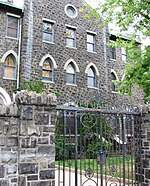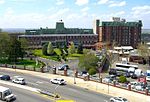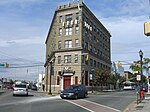Bergen Township, New Jersey (1661–1862)
1661 establishments in North America1661 establishments in the Dutch EmpireEstablishments in New NetherlandFormer municipalities in Hudson County, New JerseyFormer townships in Bergen County, New Jersey ... and 4 more
History of Jersey City, New JerseyNew NetherlandPopulated places established in 1661Populated places established in 1683
Bergen Township was a township that existed in the U.S. state of New Jersey, from 1661 to 1862, first as Bergen, New Netherland, then as part Bergen County, and later as part of Hudson County. Several places still bear the name: the township of North Bergen; Bergen Square, Old Bergen Road, Bergen Avenue, Bergen Junction, Bergen Hill and Bergen Arches in Jersey City; Bergen Point in Bayonne; and Bergenline Avenue and Bergen Turnpike in North Hudson.
Excerpt from the Wikipedia article Bergen Township, New Jersey (1661–1862) (License: CC BY-SA 3.0, Authors).Bergen Township, New Jersey (1661–1862)
Summit Avenue,
Geographical coordinates (GPS) Address Phone number Website Nearby Places Show on map
Geographical coordinates (GPS)
| Latitude | Longitude |
|---|---|
| N 40.767 ° | E -74.038 ° |
Address
Jose Marti Freshman Academy
Summit Avenue 1800
07087
New Jersey, United States
Open on Google Maps










